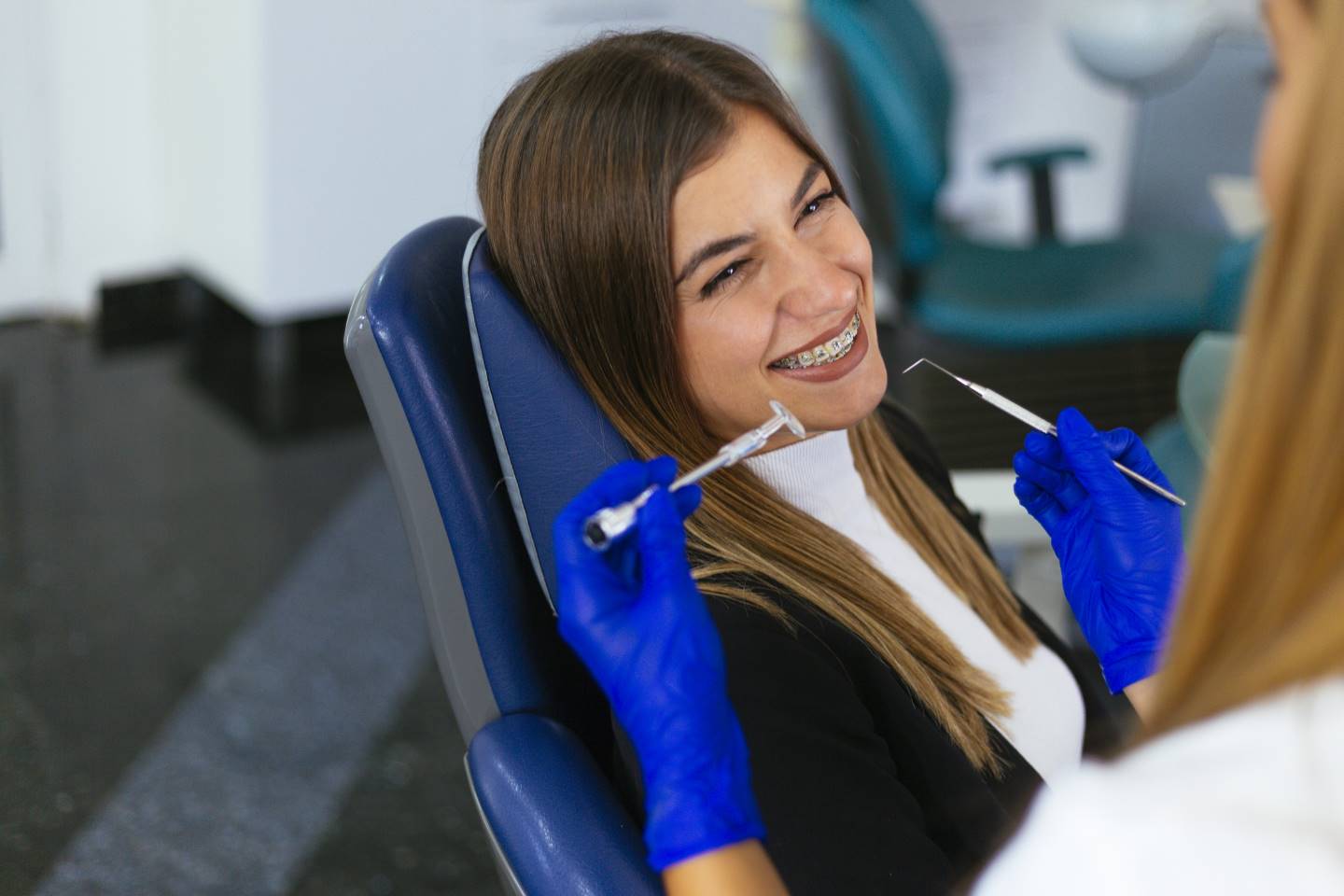Orthodontics
Orthodontics is the dental specialty that focuses on the correction of both abnormally sequenced teeth and a lack of alignment between the lower and upper jaws. Previously, orthodontists could only correct the visible front teeth, but thanks to advances in technology, problems with contact between the teeth (occlusion) and other jaw-related issues can now be solved as well. Today, orthodontic experts can even correct the position of the jawbone in the facial skeleton, as well as congenital anomalies such as cleft lips or cleft palates.
Orthodontists receive extra training above and beyond that of normal dentists. In general, dentists wishing to become orthodontists must specialise in the field for four to six years after becoming a dentist and are required to submit a thesis and pass an exam before becoming fully certified.
Your dentist can provide general information as to whether orthodontic treatment is required, but only an orthodontist can provide detailed information regarding treatment, duration and cost in the event that such work is required. Orthodontists can determine whether you require orthodontic treatment, as well as its type and duration, following a comprehensive consultation, a detailed oral and dental examination that includes X-rays and the creation of a jaw model, as well as a thorough inspection of your medical and dental history.
Which Treatment is Applied When?
People of all ages can benefit from treatment if they only suffer from teeth problems, as opposed to larger issues related to jaw alignment. Jaw-related problems, however, are best treated during development. Orthodontists can determine the stage of a patient’s growth and development by means of “cephalometric,” or wrist, X-rays, since a patient’s bone age and chronological age do not always correspond with each other. Even in the event that active growth and development have finished in a patient, severe jaw-skeletal problems can be treated by a combination of orthodontic and surgical treatment known as orognathic surgery.
Types of Orthodontics
A. Protective Orthodontics: The primary duty of an orthodontist is to prevent the emergence of orthodontic anomalies in children. Ensuring that the spaces of extracted baby teeth remain open is critical to ensuring the proper sequencing of permanent teeth in the future.
B. Suspensive Orthodontics: If orthodontic problems have not been prevented in children, they can be rectified and prevented from occurring once more with suspensive orthodontic techniques. Such treatment can include extractions to halt bad habits (e.g. thumb-sucking) and prevent the future emergence of crooked teeth.
C. Therapeutic Orthodontics: Therapy may be ordered by an orthodontist after the appearance of an orthodontic anomaly.

Goals of Orthodontic Treatment
- To ensure good chewing, speaking and breathing
- To provide patients with the best-looking teeth, jaw and face possible
- To prevent problems that can be treated with orthodontic techniques from recurring.
The Next Step
The next step is to arrange a private consultation with one of the DENTAGLOBAL associated clinics and offices in Paris, London, Rotterdam or our own facility in Izmir. You can also get a quote by filling in the detailed form on our website. We would be happy to chat with you on the phone and answer any questions you may have.